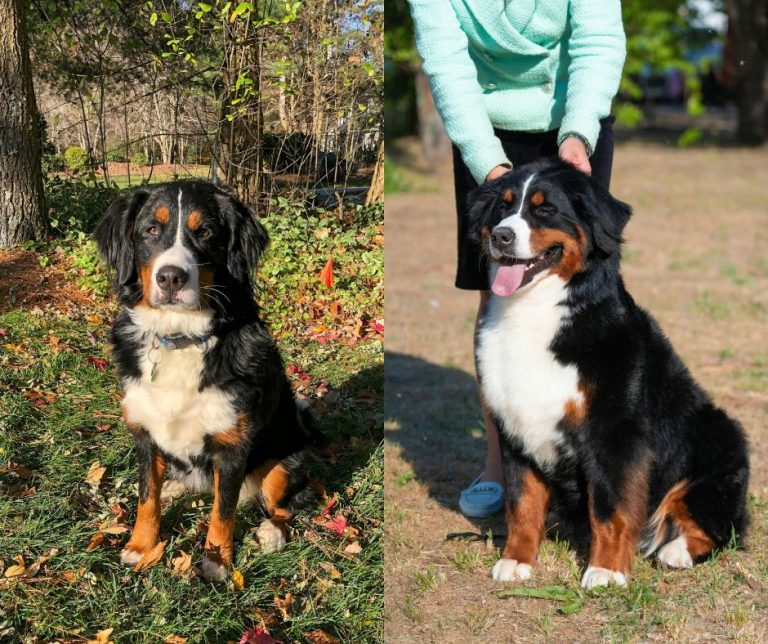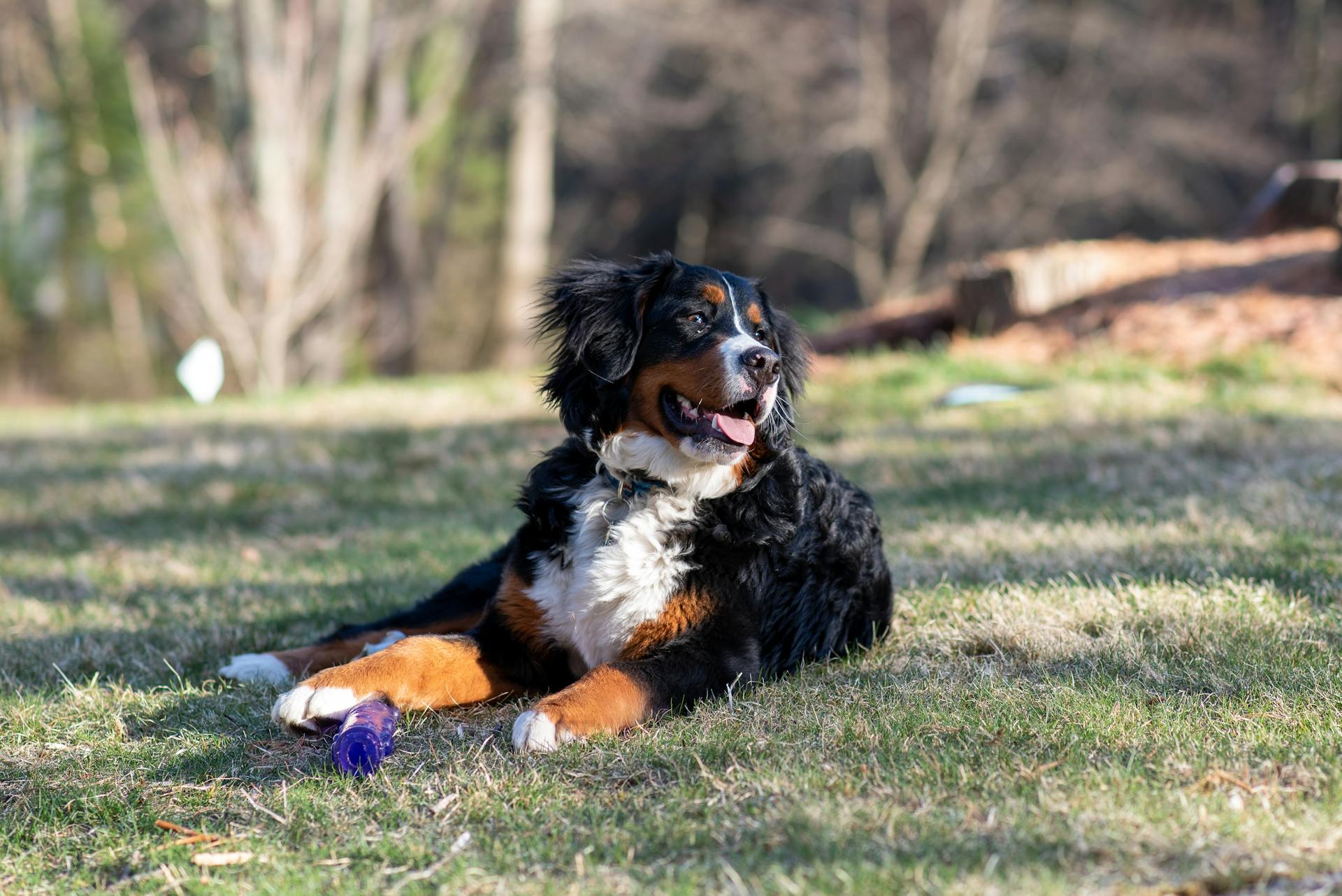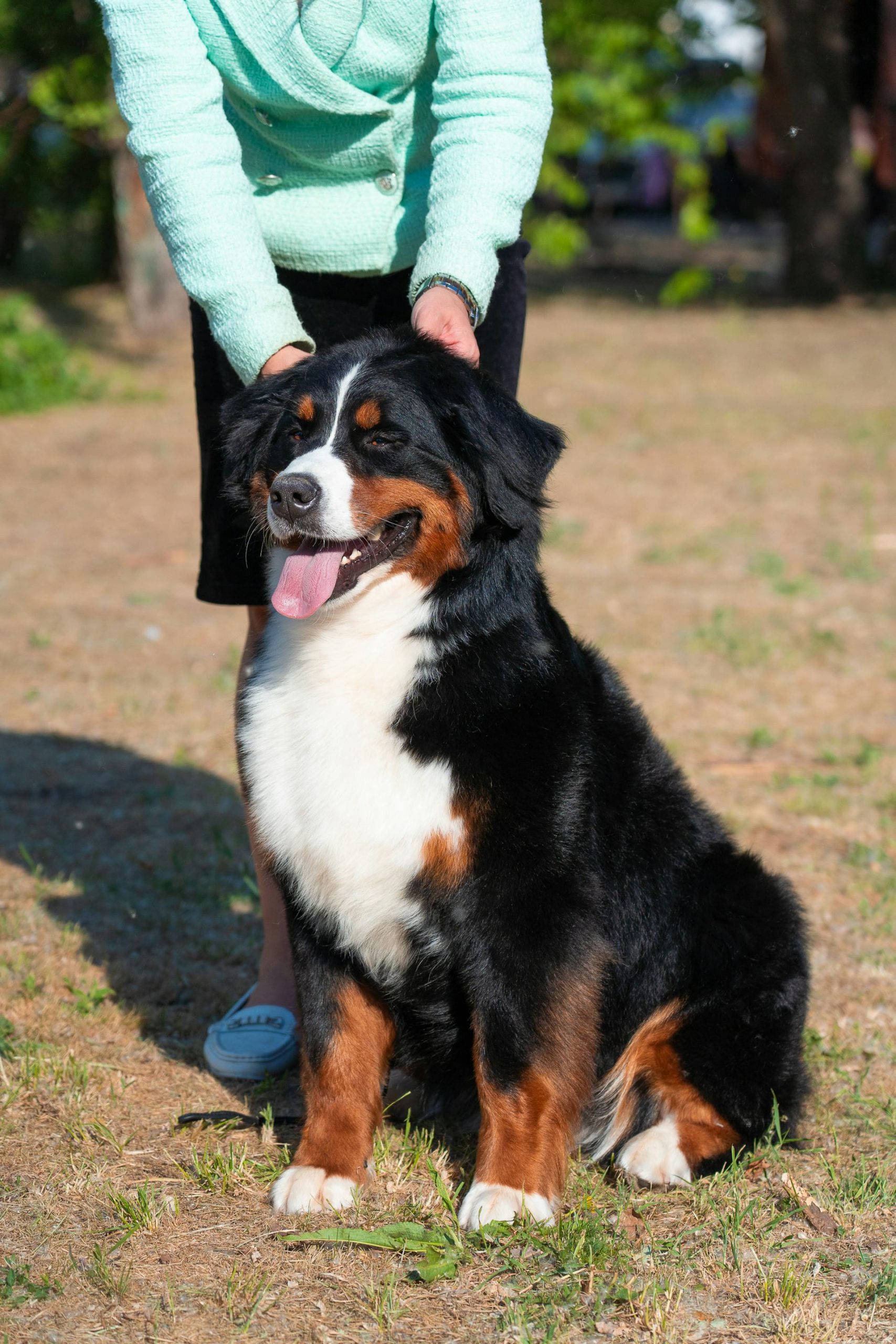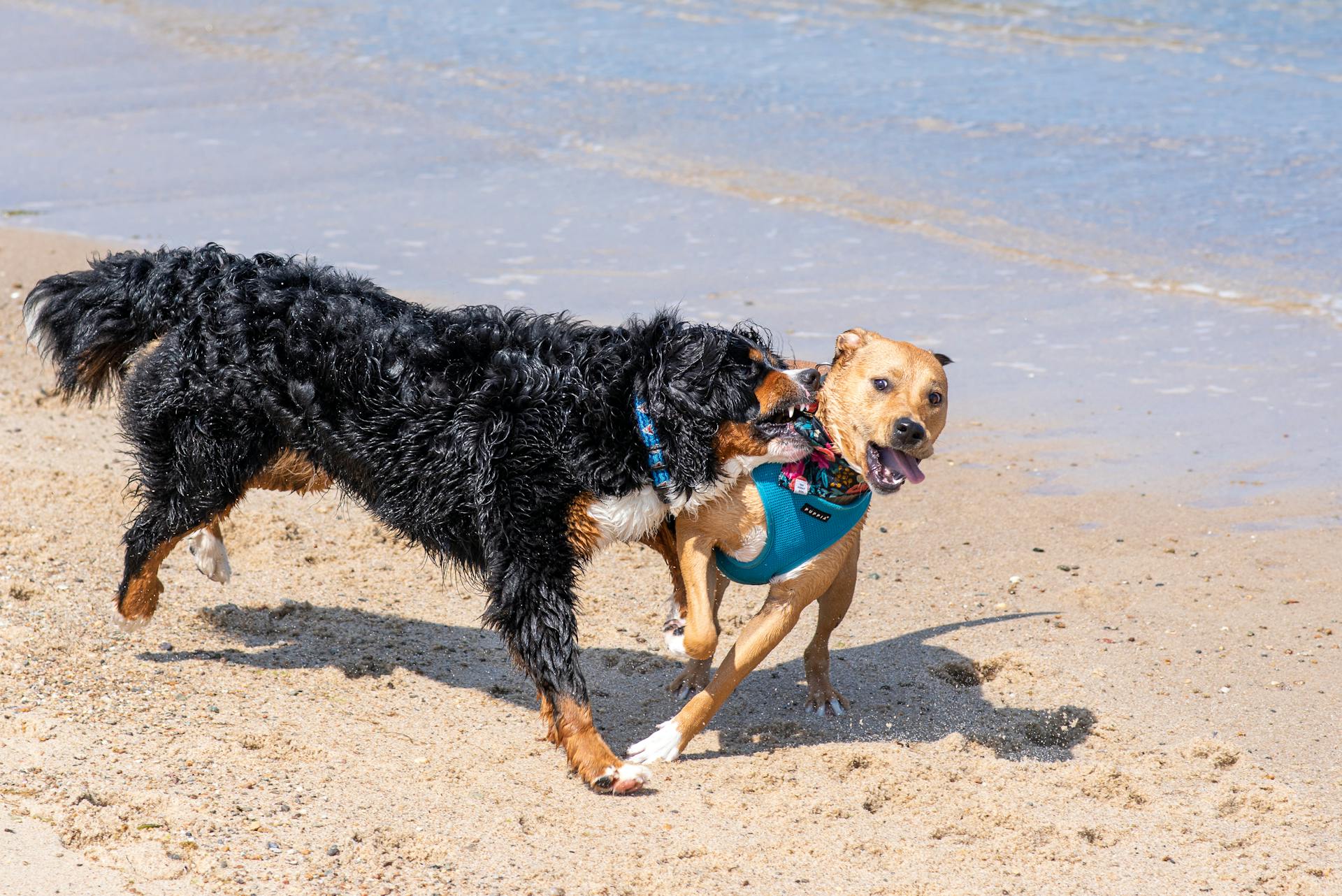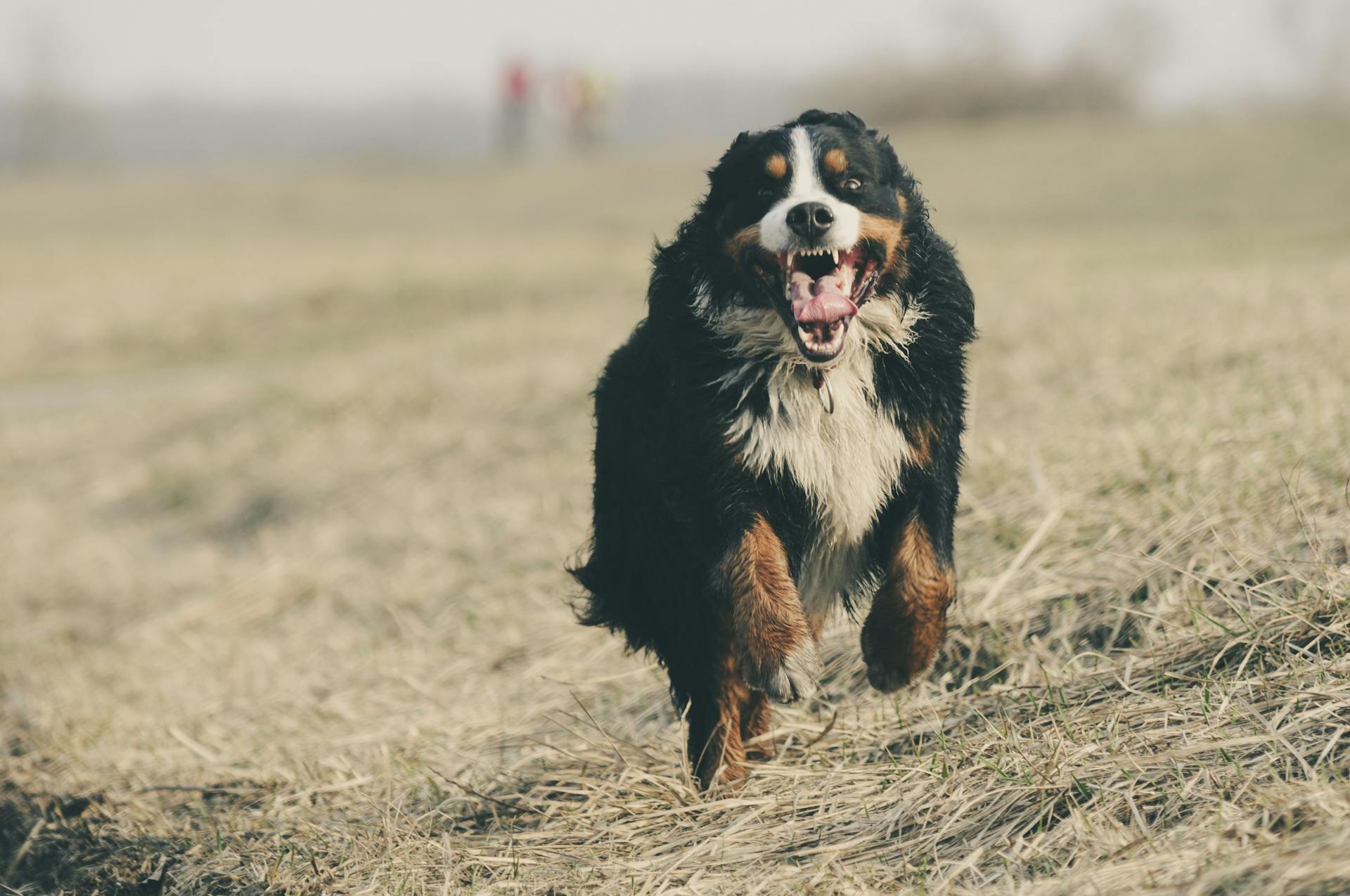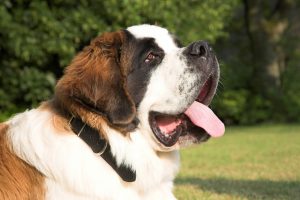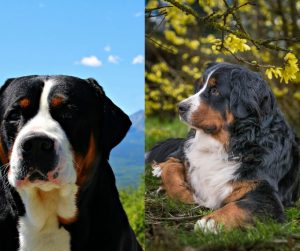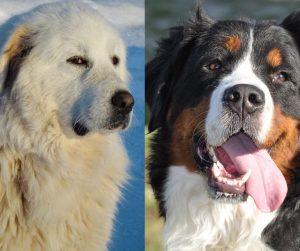When considering a Bernese Mountain Dog as a new family member, potential owners often weigh the differences between males and females. Each has its unique characteristics and charm, which can make choosing one over the other a challenge.
Generally, males tend to be larger and more imposing with a more predictable behavior pattern. Meanwhile, females might be smaller and showcase independence, potentially paired with a bit more stubbornness.
Selecting between male and female Bernese Mountain Dogs also brings training and socialization into the equation.
Males are often eager to please and may respond to dog training with great enthusiasm, while females can be swift learners with early maturity.
Understanding the nuances in temperament is essential for a harmonious relationship between the dog and its human family.
Additionally, potential health concerns and reproductive aspects of each gender are considerations that owners should ponder before making this important decision. Let’s take a deeper dive into the male vs female Bernese Mountain Dog comparison.
Key Takeaways
- Male and female Bernese Mountain Dogs exhibit distinct physical and behavioral traits.
- Early training and socialization affect both genders’ adaptability to family life.
- Prospective owners should consider health and reproductive considerations.
Physical and Behavioral Characteristics
When deciding between a male vs female Bernese Mountain Dog, one should consider their physical and behavioral distinctions. These factors are pivotal in understanding how each gender may fit into your lifestyle. You have to also understand the history of this dog breed. The Bernese Mountain dog comes from the Swiss Alps, a region where he was used as a farm and herding dog. It is quite similar to the Greater Swiss Mountain Dog and Saint Bernard.
Size and Appearance
Male Bernese Mountain Dogs typically stand between 25 to 27 inches tall and weigh from 80 to 115 pounds. They display a more muscular build and have a prominent double coat that sheds seasonally.
Female Bernese Mountain Dogs, on the other hand, are generally smaller, with heights ranging from 23 to 26 inches and weights between 70 to 95 pounds. While also muscular, females may appear more refined.
Temperament and Personality
The temperament of a Bernese Mountain Dog can be influenced by gender. Male dogs often exhibit a more even-tempered and eager-to-please demeanor.
In contrast, female dogs may exhibit more independence and can occasionally be more stubborn. However, both genders are known for their gentle and loyal nature, making them excellent family pets.
Health and Lifespan
Health-wise, there are no major differences between male and female Bernese Mountain Dogs solely based on their gender. Both can be prone to similar genetic health issues, such as hip dysplasia and cancer.
They share a similar lifespan range of about 7 to 10 years, which, like all dogs, can be influenced by factors such as diet, exercise, and genetic health.
Regular veterinary care is important for maintaining the health and well-being of both male and female Bernese Mountain Dogs.
Training and Socialization
When welcoming a Bernese Mountain Dog puppy into your home, knowing how to approach dog training and socialization is crucial to fostering a well-adjusted and happy companion.
They’re intelligent dogs, but their learning styles differ by gender, which can influence their trainability and social behavior.
Training Approach
Male Bernese Mountain Dogs usually show a keen eagerness to please, making them often more receptive to training.
They thrive on positive reinforcement, so keeping a stash of treats and plenty of praise handy is a solid strategy.
On the other hand, female Bernese tend to display a more independent attitude. Their slightly stubborn streak means training could require an extra dollop of patience.
Nevertheless, females can excel with consistent and gentle guidance.
- Male Bernese Mountain Dogs:
- Respond well to rewards and praise
- Benefit from consistent, positive reinforcement
- May be more playful during training sessions
- Female Bernese Mountain Dogs:
- Can be more independent and selective in their attention
- May need more consistent and patient training approaches
- Often respond to training that respects their autonomy
Socialization Needs
Early socialization plays a vital role in developing a well-mannered Bernese Mountain Dog.
Males typically are more sociable and may integrate more seamlessly into a family setting or establish friendly relationships with other dogs. However, they can sometimes be overzealous in their greetings.
Females are often more reserved and might take some time to warm up to new faces and fellow canines.
But don’t be mistaken, with the right social cues and experiences, they can be just as loving and sociable.
- For both genders:
- Introduce to a variety of people, places, and other pets early on
- Use positive experiences to reinforce good social behavior
- Obedience training classes can offer great socialization opportunities
Indeed, each dog is an individual, so while these traits can be common, they’re not a hard and fast rule for every Bernese Mountain Dog.
Steady and affectionate guidance is key, regardless of whether you’re working with a bubbly male or a discerning female.
Health Concerns and Conditions
When deciding to welcome a Bernese Mountain Dog breed into their home, prospective owners should be aware of specific health issues that are prevalent in this breed.
Gentle giants they might be, but Bernese Mountain Dogs come with a set of health concerns that require attention and care.
Common Ailments
Bernese Mountain Dogs are susceptible to certain genetic conditions such as:
- Hip and Elbow Dysplasia: These are malformations of the hip and elbow joints that can cause pain and lameness
- Cancer: Sadly, this breed has a higher propensity for various cancers, which are among the leading causes of death in Bernese Mountain Dogs
- Progressive Retinal Atrophy: This eye condition leads to a gradual decline in vision and possible blindness
- Epilepsy: Seizure disorders can be a concern for these dogs, affecting their quality of life
- Von Willebrand’s Disease: A blood disorder that affects clotting can be seen in this breed
- Obesity: As large dogs, they must maintain a proper diet to avoid weight-related health issues
Health Screenings
To catch and manage health concerns early, the following health screenings are recommended:
- Hip and Elbow Evaluation: X-rays can help detect dysplasia early on
- Eye Exams: Regular checks can spot Progressive Retinal Atrophy and other eye issues
- DNA Tests: These can test for Von Willebrand’s Disease and other genetic conditions
Preventative Care
Preventative care plays a vital role in keeping Bernese Mountain Dogs healthy:
- Regular Exercise: Helps prevent obesity and keeps joints mobile
- Spaying/Neutering: Reduces the risk of certain cancers and other health issues
- Balanced Diet: Essential for maintaining ideal body weight and overall health
- Routine Vet Visits: These are crucial for early detection and management of health concerns
Owners should embrace these majestic dogs with full understanding and commitment to their health needs.
Reproductive Health
When it comes to the reproductive health of a Bernese puppy, pet owners should be aware of gender-specific considerations and the impact of spaying or neutering their pets.
These processes not only affect the potential for breeding but also have health implications that are important to understand.
Breeding Considerations
For those considering breeding Bernese Mountain Dogs, it’s essential to be informed about the large breed‘s reproductive cycle and health risks.
Females generally come into heat twice a year, and during this time, they can exhibit behavioral changes and produce a bloody discharge.
Responsible breeding requires an understanding of their cycle and monitoring for any signs of reproductive issues.
Males can typically start breeding once they reach sexual maturity, but it’s crucial to assess their health and genetics to avoid passing on any inheritable conditions.
Spaying and Neutering
Spaying (for females) and neutering (for males) are surgeries that prevent Bernese Mountain Dogs from reproducing.
- Spaying is often done before the first heat cycle to reduce the risk of mammary cancer and eliminate the risk of uterine infections
Pros of Spaying Cons of Spaying Reduces cancer risk Requires general anesthesia Eliminates heat cycles May cause weight gain - Neutering males can prevent certain behaviors, like wandering to find a mate, and decrease the risk of testicular cancer and prostate issues
Pros of Neutering Cons of Neutering Reduces aggressive tendencies Requires general anesthesia Decreases risk of certain cancers May lead to weight gain
Both procedures contribute to controlling the pet population and may lead to a more harmonious household, as pets are often calmer and less driven by the demands of their reproductive systems.
Choosing Between Male and Female
When considering a Bernese Mountain Dog puppy as a family pet, potential owners often ponder the differences between males and females.
Both genders bring their unique qualities to the home, and understanding these can help in making an informed decision that’s best for your household.
Behavioral Tendencies
Male Bernese Mountain Dogs are known for their desire to please their owners, which can make them slightly easier to train. They typically display a predictable pattern in their behavior, which often revolves around affection and loyalty.
On the other hand, female Bernese Mountain Dogs may exhibit more independence and can be more prone to stubbornness. This doesn’t mean they aren’t affectionate; their affection often comes with a strong-minded character.
- Male: Predictable, eager to please, loyal
- Female: Independent, can be more stubborn
Compatibility with Families
Both male and female Bernese Mountain Dogs have a reputation for being loving and friendly companions, making them excellent family pets.
Males may be more laid-back and could fit well in homes with children due to their less dominant nature.
Females might show mood swings during the heat cycle, which is something to consider if predictability is important to you.
Neither gender is known for excessive aggression, but establishing clear leadership with respect to alpha status is important for maintaining harmony regardless of gender.
- With Children:
- Male: More likely to be calm and gentle
- Female: May require careful introduction and leadership cues
Making the Decision
The gender of a Bernese Mountain Dog breed does not exclusively determine its suitability as a pet. Instead, it’s their individual temperament, how they fit with your family’s lifestyle, and how well you can meet their needs.
Consider space, since males generally are larger than females.
It’s crucial to weigh both the pros and cons of each gender:
| Male | Female |
|---|---|
| Larger and may need more space | Generally smaller and less bulky |
| Less prone to mood swings | Independent streak |
| Tends to be less stubborn | Might show stubbornness |
Always meet the dog in person to gauge their individual personality and how they might meld with your family.

